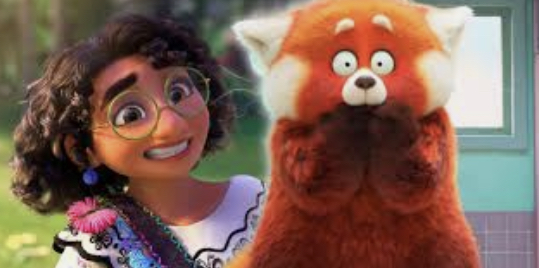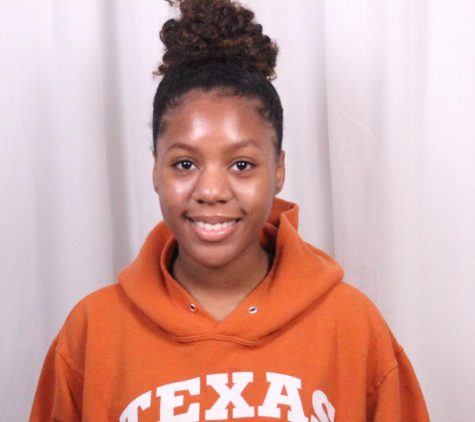The Not So Sweet Life of Animation

While animated movies in recent years have shown more diversity, there is still more growth needed.
In recent years many new animated kid movies have featured cultural storylines such as ‘Encanto,’ ‘Moana,’ ‘Coco,’ and ‘Turning Red.’ However, with the popularity of these movies it has started conversations about cultures that are often left out of these culturally significant movies. In recent years the conversation surrounding representation has become controversial. Some argue whether or not the way certain races are portrayed or not portrayed in the media and I’m kids films impacts the young audiences who watch them.
Growing up many African Americans didn’t have positive role models in movies or had any culturally positive animated movies to watch as they were in their formative years. This has inspired many to want to change this narrative from the inside of the industry. Senior, Olivia Howard, wants to be an animator in order to make cartoons more inclusive and diverse to reinforce positive stereotypes for young children who often are not portrayed this way in film.
“Well, I feel like representation is really important for kids because it shows them what they can be. And I feel like when you see yourself in the media and you feel represented and you feel that you can do anything. I feel as though black people are often left out of these types of movies because of racism and also specially when it comes to kids, black people are seen as less cute. So they may go for different races or different skin tones. So, I think that having such a lack of representation really does, get into the minds of kids,” Howard said.
Another hot topic surrounding representation is that films that feature black characters such as Princess and the Frog and Soul do not keep characters black the whole time during the movie. For example in Princess and the Frog the main character, Tiana, who is African American was turned into a frog for most of the movie. Howard thinks that this goes deeper than just a unique storyline.
“Black people often aren’t black the whole time. I feel like industries don’t view black people as a marketable thing. So they turn it into a marketable plushie like the little cute soul animal or a frog. Which really sucks for kids to see because it makes it seem like they aren’t good enough,” Howard said.
Howard also thinks that in the film industry there are a lot of negative stereotypes that are enforced for black girls in particular which can have lasting effects on them. However she believes that there is hope in the future for a more diverse and inclusive animated film industry.
“There are a lot of stereotypes in the media like, if you have a little black girl she’s gonna be the sassy one or something like that. If you have a little black boy, there’s a lot more range with that, but it’s still an issue of how black children and just black people are presented in the media. I just really want to include a lot of diversity like, from black kids to Middle Eastern, just all different types of races, ethnicities, religions, because I feel like it’s really important for kids to just see themselves on TV,” Howard said.
Some such as Senior, Skylar Parker, feel as though the movies that feature black people have positive impacts on the young kids who watch them and what they think of themselves. This can be seen through the way that young black children have embraced movies like ‘Princess and the Frog’ and ‘Black Panther.’
“Movies that feature black characters teach young black children that they can be bigger and better than they thought. Black people typically aren’t featured because society does not want black people to be seen as successful or great. Since society sees black people as ignorant and unsuccessful it is hard to make black characters positive and iconic,” Parker said.
Movies like ‘Encanto’ and ‘Turning Red’ often address generational curses that often are faced in different cultures. Junior, Mikaela Maramba , feels as though movies like this are important for young children to have because it allows them to be more comfortable in their own skin.
“I feel like films that feature people of different races and ethnic cultures gives people a chance to be comfortable with themselves since some POC get made fun of because they do not fit in with normal culture,” Maramba said.
The new disney film Turning Red features an Asian American family and portrays their life. Maramba feels as though this was accurate and makes her feel understood within her community.
“I feel like Turning Red gives Asian Americans especially those whose parents are immigrants a sense that they are not alone and it is okay to feel certain ways at times and shows that there are other people who can relate to them. As an Asian American with immigrant parents, I feel like the plot of the movie and the characters in the movie were very relatable because obviously, my mom wants what’s best for me as far as academics and stuff. And in turning red, it’s the same way. The main character and the mom have struggles because the mom wants what’s best for her kid, and they do not always see eye to eye. I feel like that’s something I could really relate to. With younger generations, I hope that they don’t experience the same thing. And now with this movie parents can understand that kids also have struggles too, and even though they want to push them to the best, it should be to a certain extent,” Maramba said.
Some who feel underrepresented in animated cultural films such as senior, Aryca Rae Williams, feel as though the best way to make progress is to change the industry from within. She feels as this would be the best way to make change because nobody knows more about these communities than the people who are a part of them.
“I think the best way for black people to have positive movies is for them to be directing their own movies and getting all black producers, executive producers and black actors. I think now a lot of non black people see us as intimidating and negative when we’re not. A lot of black people hold a lot of good in their heart and I think a lot of people don’t see that. They see us as angry, and aggressive, but we’re really not. I feel like white people are still trying to get under our skin and try to get in the way of us doing better.
All in all, while positive representation in animated film has become more inclusive over the last few years some communities feel as if they are being left out from the trends that other communities are benefiting from. However due to the next generation of animators there is hope that more communities will get the recognition in animation that they desire.

